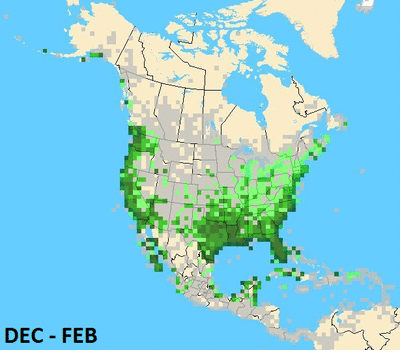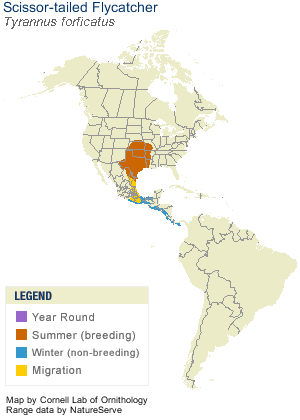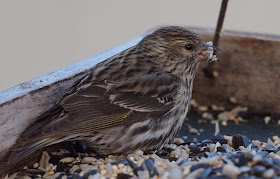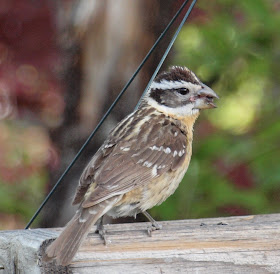Yesterday morning,
Eric Huish, found a
Scissor-tailed Flycatcher at his birding patch, the
Provo Airport Dike on Utah Lake. His sighting was confirmed shortly by
Tim Avery of the
Utah Birders Blog. As you might imagine, a cool vagrant bird like this has the local listservs all abuzz. I was ready to go twitching yesterday, but alas, my wife needed the family minivan so I was dropped off at work car-less. I'm glad I wasn't able to go yesterday as all of my fellow Utah bird chasers were not able to relocate the stunning flycatcher. A terrific windstorm rolled in during the afternoon and once I saw that storm I was sure the vagrant Scissor-tail would be gone.
To my delight, Eric reported the Scissor-tailed Flycatcher again this morning. I went ahead and took an early lunch to make the chase. When I arrived at the Provo Airport Dike road I found Milt Moody and Barbara Watkins who told me that the bird had not been seen for about 15 minutes. After half an hour, an anxious group of twitchers grew to about ten people and we were all scanning every which way and chatting it up a bit. A newly arriving birder, Dan Hunsaker said he thought he had just seen it heading our way, so we spread out a bit and started watching with renewed vigor.
Suddenly the Scissor-tailed Flycatcher flew over head and started flycatching out airport runway field. Most of us got good looks as it flew this way and that. With the sun behind it, it was beautiful in flight; its under-wings appearing a translucent buffy color. We could also see the reddish flanks, white breast and light-gray head. It occasionally perched on a tall plant or on the ground, but was most often in the air out over the open area of the airport runway field. At one point it perched on the fence near the airport tower and a few of us took some long distance photos. The Scissor-tailed Flycatcher was back-lit, but I think the photos will be diagnostic enough to support Eric's rare bird report.
This Scissor-tailed Flycatcher is presumed to be a juvenile as it has not yet developed the two long tail plumes, but does have a long forked tail.
To establish how cool a sighting this is in Utah, below are a couple maps showing the typical range and where the Scissor-tailed Flycatcher has been seen by
eBirders. The
Utah Bird Records Committee shows eight previously accepted sightings going back to 1948, with 15 total reports on record. There are just four accepted reports in the past decade, the most recent being in May 2005 in Wayne County (southern Utah).
Again, it was great to meet in real life those leading Utah birders whose names I have been seeing online. The guys behind
Westwings Birding Tours: David Wheeler and Mark Stackhouse. David was recently mentioned here on this blog for the
Palm Warbler sighting in Salt Lake. Mark Stackhouse, currently lives in Mexico, but visits family in Utah regularly and leads tours when he is here too.
Milt Moody - the webmaster of
UtahBirds.org. Bryant Olsen - a regular reporter on Utah listservs. Larene Wyss - who sports one of Utah's largest life lists. Barbara Watkins - who I've been told has an enormous world life list. LeIla Ogden and another gentleman who I asked his name, but with all the excitement it didn't stick with me.
The Provo Airport Dike is also an amazing Utah Birding Hotspot. eBird records currently show 230 species reported here, and that list is obviously growing! A road runs along the dike which separates Utah Lake on the west from the airport runway. An irrigation canal also runs along the road to the east. Utah Lake State Park is adjacent to the airport. There is a wonderful corridor of trees, brush, marsh, and wild grasses, plus lots of fence line for perching birds. No wonder it has been getting so many rarities this spring!
Map created by Tim Avery






















































